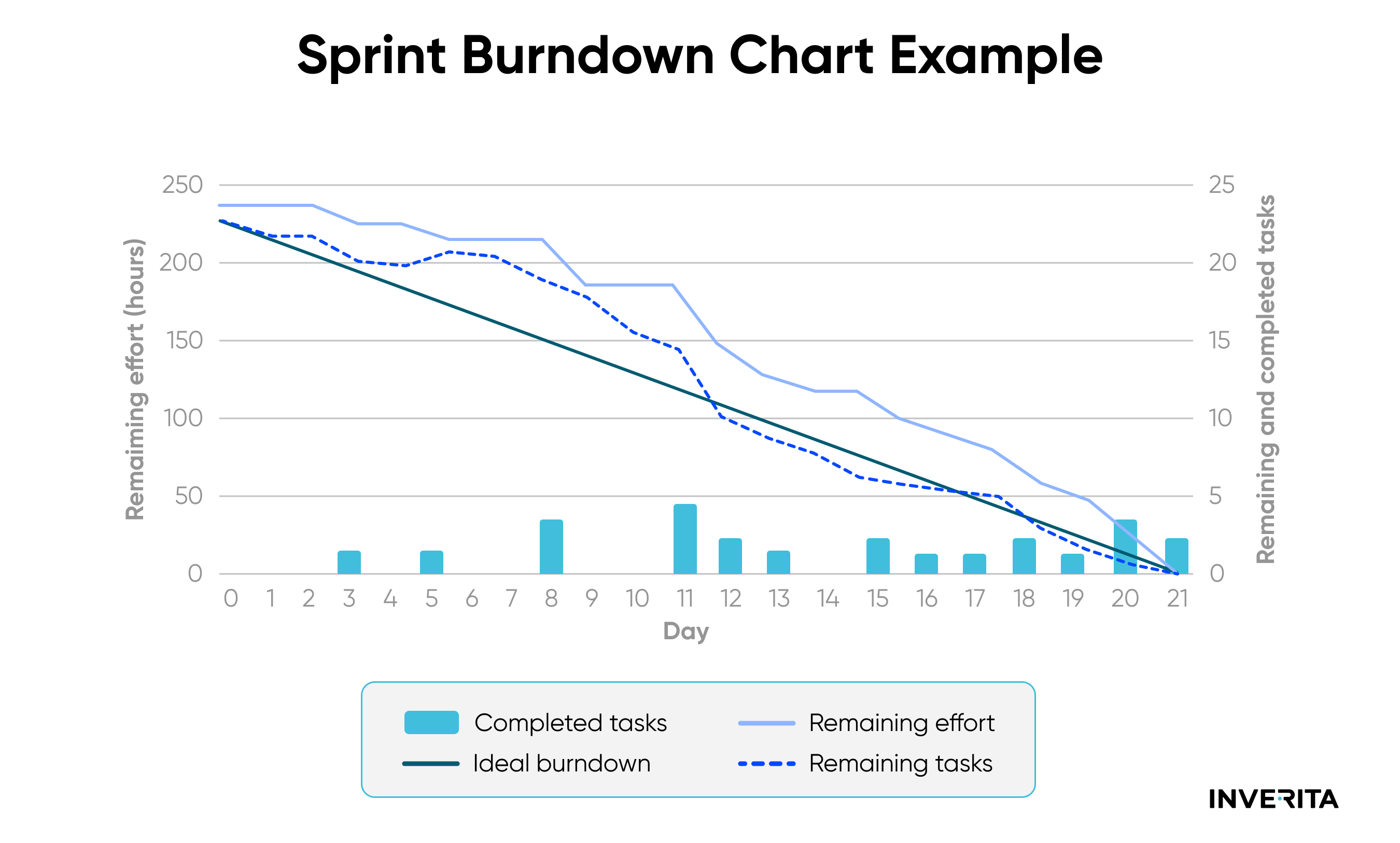# Lead and Cycle Time
Lead time and cycle time are two fundamental Agile project metrics that provide valuable insights into the duration of work items spent in a particular process. However, there exists a distinct difference between them.
Lead time measures the total time, including wait time, that a work item spends in the entire process from the moment it is requested to the time it is delivered. For instance, when a customer requests a service or feature, lead time begins accruing from the commitment to deliver the service/feature, even if work has not yet commenced. Lead time can be thought of as the "customer timeline."
Cycle time starts accumulating once work begins on the requested item in Agile. It measures the duration of active work on a task to completion. With cycle time, teams can track the hours/days spent actively working on tasks, providing insights into project duration and facilitating better forecasts for project completion. Cycle time can be likened to the "team timeline."
Tracking lead and cycle time metrics is facilitated by using a Kanban board. The board visualizes when a work item is committed for execution and when the actual work begins.
Why is it important?
Tracking lead and cycle time in Agile software development is crucial for understanding the total time from request to delivery (lead time) and the time spent actively working on tasks (cycle time). These metrics provide insights into process efficiency, bottlenecks, and predictability, enabling teams to streamline workflows, improve planning accuracy, and ultimately deliver value to customers more quickly and effectively.
# Test Coverage
Test coverage provides insights into the extent to which the codebase is exercised by automated tests, indicating the thoroughness of testing and potential gaps in test coverage.
It measures the percentage of code or software functionality covered by automated tests compared to the total codebase so that teams can evaluate the adequacy of their test suite and identify areas of the code that are not adequately tested.
Why is it important?
By ensuring comprehensive test coverage, teams can mitigate the risk of undetected bugs and errors in the software.
One common approach to test coverage measurement is code coverage analysis, which involves running automated tests and analyzing which parts of the code are executed during testing. This analysis typically categorizes code coverage into different levels, such as statement coverage, branch coverage, and path coverage, providing granularity in assessing test effectiveness.
# Defect Rate
The defect rate shows the frequency and severity of defects or bugs found in the codebase, highlighting areas that require attention and improvement.
This metric measures the number of defects discovered in the software per unit of work, such as lines of code or user stories. It serves as an indicator of the overall health of the codebase and the effectiveness of quality assurance and testing processes. A high defect rate may indicate underlying issues in development practices, code complexity, or inadequate testing coverage.
Why is it important?
Tracking the defect rate allows teams to identify trends over time, monitor the impact of changes or enhancements on software quality, and prioritize defect resolution efforts. By addressing defects promptly and systematically, teams can improve the stability, performance, and usability of the software product.
# Code Quality and Maintainability
Using static code analyzers can be a valuable tool for tracking software development KPIs, particularly in areas related to code quality and maintainability. These analyzers automatically examine source code without executing it, identifying potential issues such as coding standards violations, security vulnerabilities, and performance bottlenecks.
By integrating static code analysis into the software development process, teams can monitor metrics such as code complexity, code duplication, and adherence to coding standards over time.
Why is it important?
This helps ensure consistent code quality, reduce technical debt, and ultimately improve the reliability and maintainability of the software product. Static code analyzers provide actionable insights that empower teams to address issues early in the development lifecycle.
A good option is SonarQube which we use at inVerita for the .NET platform. 










_1764586939-small.webp)
